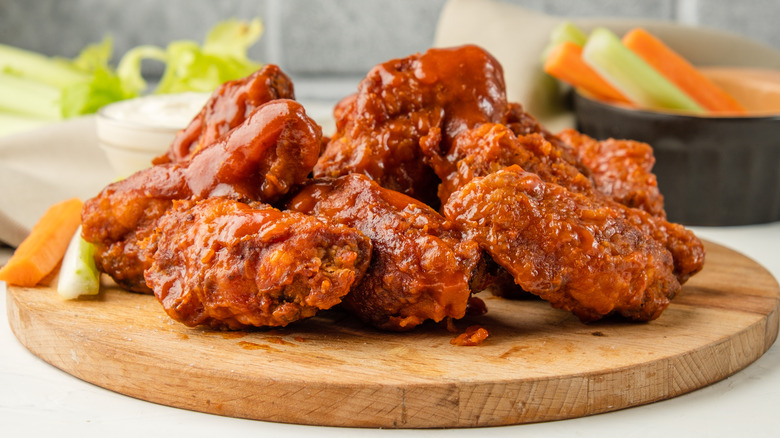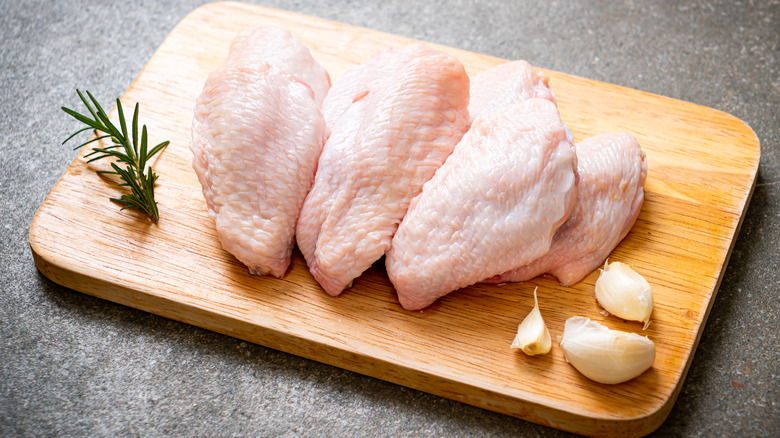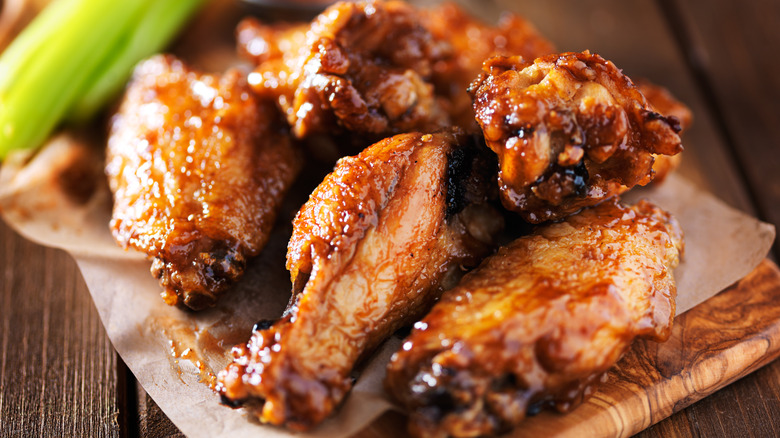Brine Your Chicken Wings For Unbeatable Juiciness
Chicken wings are the quintessential party food. They're crispy and saucy, with a little bit of spice and a ton of flavor. You can eat them with abandon — and with your fingers. WIngs pair perfectly with so many things, ice-cold beer, high-stakes sports games, and happy hour, just to name a few.
Since the first plate of Buffalo wings was served at the Anchor Bar in Buffalo New York in 1964, their popularity has exploded across the country and around the world. It makes sense since they're an easy appetizer that can be dressed up in many flavors beyond the traditional dose of Frank's Red Hot.
But, for every delicious plate of wings we've enjoyed, we've all found ourselves facing the particular disappointment that is a bad plate of wings. Their small size means it's easy for them to lose moisture while cooking. When done badly, chicken wings can be a dry, brittle heartbreak.
Brining your wings is the answer
Brining meat started to become popular 20 years ago when chefs began recommending using a brine method to ensure that turkeys came out of the oven with golden brown skin and a succulent inside. Over the years, brining has grown beyond the Thanksgiving table to become a popular method of keeping poultry juicy while cooking.
Michelin-starred chef Daniel Boulud is a believer in the power of a good brine, explaining to HuffPost that "if you brine a chicken, its flesh will be much more moist, the skin will be much more crisp, and," he adds, "it will taste better." If a brine brings that much flavor to a whole chicken, it's also the ideal way to make sure your next platter of wings is full of flavor and not disappointment.
Brining your wings helps to infuse flavor into the meat itself. As we mentioned, it also helps the meat retain moisture — the salt in the mixture actually changes the structure of the meat's protein, allowing it to hold more liquid. That means every bite of chicken is tender and full of flavor.
There's a brine for every mood
There are as many types of brines as there are wing sauces, which is to say that there is something for everyone. They all work to do the same thing — fill your food with flavor. But they all bring something a little different to the table.
When you think of this cooking method, you probably envision a wet brine. Recipes for a wet brine generally include mixing a solution of salt, water, and seasonings to soak your wings in before cooking. One popular type is the buttermilk brine. While these might be the most traditional, they're not the only way to go.
There's also the dry brine method, which is exactly what it sounds like — brining without the liquid. This process relies on rubbing the salt and seasoning directly on the wings and letting them rest. Many people prefer this type of brine because it's less wet and messy.
Whether you decide to go with the wet or the dry brine or introduce buttermilk to the mix, this trick is going to upgrade your wing game. Pick your brine, select your seasonings, and get the sauce ready. It's wing time.


